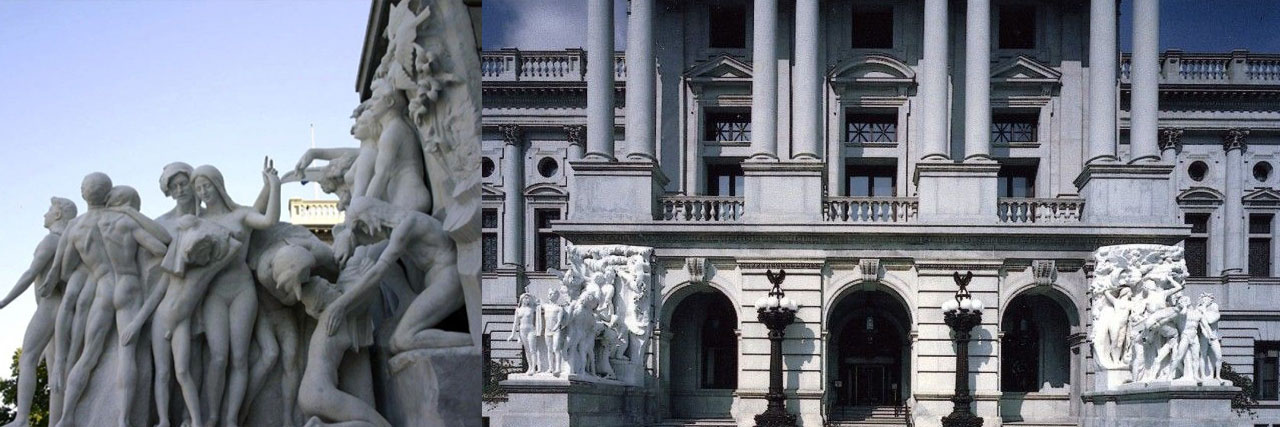The Association for Preservation Technology International
Annual Meeting, Monterey, CA, USA, October 2001
Author and Speaker: Joseph Sembrat
The Barnard Statuary Group is located at the main entrance to the Pennsylvania State Capitol building in Harrisburg, Pennsylvania. The two Carrara marble groups were carved in Pietrasanta, Italy from 1903 to 1911 by the Piccirilli Brothers of New York. Each monumental figure in the two groups was carved from of an individual block of marble each weighing up to 7 tons.
By the late 1920’s there was concern about the condition of the sculptures and it was decided that they should be cleaned and treated with “…a special transparent waterproofing compound.” Contrary to the artist’s protests, the treatment was performed. During this restoration campaign it was noticed that numerous cracks had formed on the sculptures, some of them resulting in displacement of the figures. In addition to performing cleaning and waterproofing procedures, the restoration company repointed the monument and “filled in” areas where water was being trapped. By the end of the restoration project over 14 ½ tons of concrete were used to “stabilize” the two groups.
By 1947 the statues were once again in a state of disrepair and calls from the governor and other politicians led to a second cleaning and waterproofing campaign that involved the use of the “Caffal Process” by the Obelisk Waterproofing Company of New York. This process “strengthens the stone and provides a water repellent surface” through the use of hot paraffin wax and petroleum solvents.
The statues were “periodically scrubbed and patched” over the ensuing years. In 1962 the grouping were once again cleaned and waterproofed using a silicon compound. More recently, in the mid-1970’s the sculptures were sandblasted, resulting in the removal of pollution deposits, but also much of the fine detail and what was left of the original finish.
EverGreene was hired by the Commonwealth of Pennsylvania to design and execute a testing program to evaluate the effectiveness of various repair treatments and to design and implement a monitoring program to evaluate the treatment over the duration of the contract period.
The testing program consisted of a series of tests to: 1) establish a conservation timeline in order to understand all previous treatments that were performed on the sculptural groups; 2) establish essential basic data on the nature and performance of the Carrara marble of the groups; 3) compare the effectiveness of various consolidation methods and materials for Carrara marble; 4) evaluate if there are any adverse interactions between the proposed conservation materials and those materials that were used in previous treatments; and 5) evaluate any possible interactions between the proposed conservation materials and the Carrara marble.
This paper will examine the effectiveness of past conservation treatments and discuss the consequences in light of the present condition of the sculptures. The paper will also discuss the current testing program and how it attempted to accommodate past treatments without compromising the success of the current conservation project.
